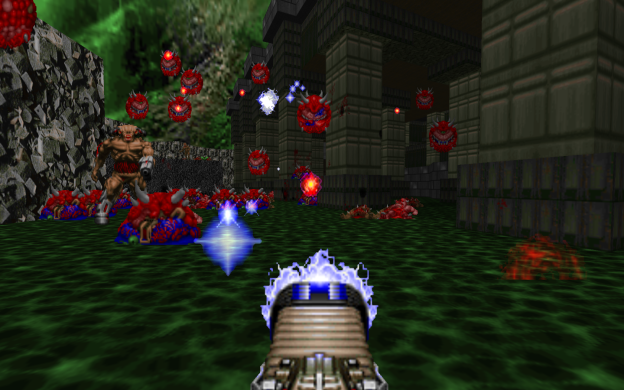As always, I am generally writing to and from the position of FPSes.
There are three axes for skill settings, broadly speaking, which can change (non-exclusively) to adjust the difficulty, they are:
- Behavioral – Enemies gain or lose abilities, display different reaction times, change tactics, and vary in accuracy and prediction. A simple illustration of this is in the original Unreal where the combat capability of the monsters was modified by the difficulty level you selected.
- Nightmare difficulty deserves a special note here, as it often increases monster attack speed, general aggressiveness, and may include elements such as respawning. Nightmare was created for Doom in a patch, a response to player complaints that Ultra-Violence was too easy. You may want to read my small article on Duke Nukem 3d’s higher difficulties.
- Economical – Health, armor, and ammo are more scarce, inventory may be limited. This can engender an anti-completionist attitude, or drive the secret hunter all the further.
- Circumstantial – This one is a bit broader and can include changing level layouts, though less common due to technical and labor reasons, but more often involves Economical changes on top of enemy positioning, quantity, and composition changes. This method was commonly used in FPSes and can be seen extensively in Quake for the wide shifts in level density and battle complexity depending on the difficulty.
These increase the cognitive load on the player, asking him to factor in more at a time for decision making, thus asking the player to use their existing education about the game in a more strenuous form, while mentally juggling changing data points, which takes us back to the simple notion that learning is fun, when focused and applied. Continue reading


